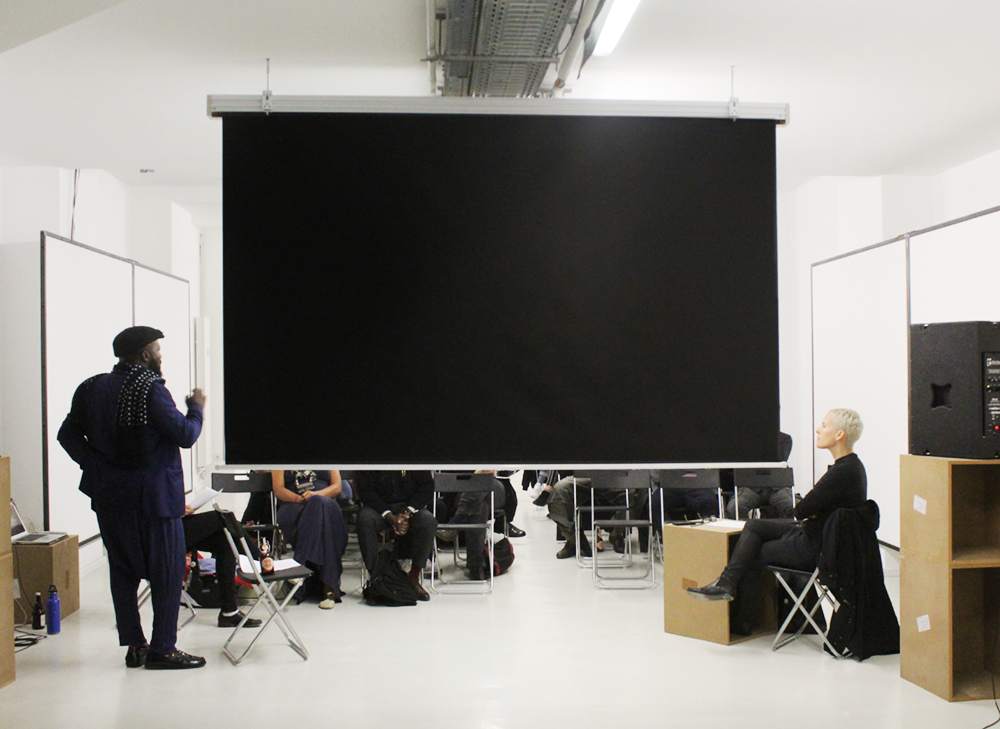Touki Bouki
How does the world breathe now?
Session N°12 14.12.2016 19:00
With Antje Majewski
film Touki Bouki 1973 95 minutes
By Djibril Diop Mambéty
Language French and Wolof with English subtitles
Antje Majewski choses Touki Bouki to watch with us “because it is one of the most important films I know. It has a style that is unique and a rhythm of acting and editing that are all very important for me as an artist. All that this film is about is still relevant today, and will be relevant tomorrow. I also have a more personal connection with the film. I encountered the spirit of Djibril Diop Mambéty through his friends of the Laboratoire Agit Art in Dakar, of which he was – and is – a member. During this evening, I would like to present not only the film, but also a short homage to Mambéty, that I filmed at his house at the île de N’Gor, Sénégal.”
With a stunning mix of the surreal and the naturalistic, Djibril Diop Mambéty paints a vivid, fractured portrait of Senegal in the early 1970s. In this French New Wave-influenced fantasy-drama, two young lovers long to leave Dakar for the glamour and comforts of France, but their escape plan is beset by complications both concrete and mystical. Characterized by dazzling imagery and music, the alternately manic and meditative Touki Bouki is widely considered one of the most important African films ever made.
Djibril Diop Mambéty (1945–1998) was an actor, orator, composer and poet. Though he made only a small number of films, they received international acclaim for their original and experimental cinematic technique and non-linear, unconventional narrative style. Some of his most acclaimed movies are Touki Bouki (1973), Hyènes (1992), and La Petite Vendeuse de Soleil (1999).
Antje Majewski was born 1968 in Marl/Germany, she lives in Berlin and Himmelpfort. She is an artist who works with painting, video, texts, and performances to explore anthropological and philosophical questions. Her recent work focuses on questioning objects, territories and plants, and exploring alternative knowledge systems and storytelling as well as the possibility of transformative processes. She studied art history, history and philosophy in Cologne, Berlin, and Florence from 1987 to 1995, and has been professor of painting at Muthesius Kunsthochschule in Kiel, Germany since 2011. Since 2009, her works takes the seven objects of her “Gimel World” as a point of departure, and are accompanied by complex research. Majewski often collaborates with other artists and ecological and urban groups, and has also curated exhibitions. Selected publications include: Aleksandra Jach, Joanna Sokolowska, Antje Majewski, Amy Patton, Susanne Titz: Apples. Over and over and once again / Apfel. Wieder und wieder und immer wieder; Museum Abteiberg Mönchengladbach and Berlin / New York: Sternberg Press, 2016; Antje Majewski: Der Meteorit / The Meteorite (Heidelberg: Heidelberger Kunstverein, 2014); Antje Majewski, The World of Gimel: How to Make Objects Talk, edited by Adam Budak and Peter Pakesch.

